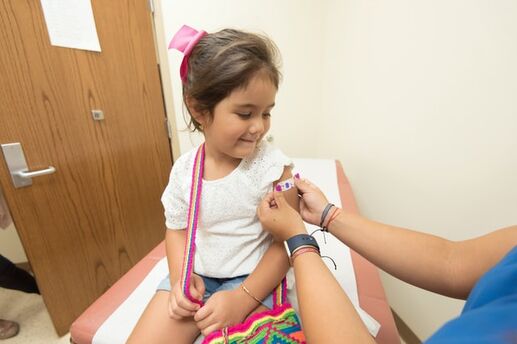Hugs and Kisses: Nature's Perfect Cold Remedy
As a parenting expert, I often teach one simple, free way to get your kids to stress less, fend off colds, and sleep more soundly. It sounds too good to be true, right? But these are just a few the benefits of one simple action: touch.
Children need physical touch as much as they need the air they breathe. After all, it's the only one of the physical senses that humans can't live without. That's because our skin plays an important role in the stimulation of hormones and function of the internal organs. In fact, a growing body of research shows that touching has many rewards, such as
- Healthy growth and development. Research from the University of Miami's Touch Research Institute found that infants who received regular massages from their moms grew more and gained more weight after a month.
- Less stress and anxiety. Touch can improve the relaxation response, lessening stress and anxiety, reports a study published in the International Journal of Neuroscience.
- Better sleep. Need more shut-eye? Give a few more snuggles. According to a study published in Infant Behavior and Development, babies who were given regular massages slept more soundly than those who didn't.
- A stronger immune system. Massages boost the production of natural killer cells, cells that fight off viruses and other invaders, reveals a study from the University of Miami's Touch Research Institute.
- Reduced aggression. In a study of 17 teens, those who received 20-minute massages twice a week reported feeling less hostile after about a month. Their parents also said they seemed calmer and less aggressive.
But even with all these proven benefits, children receive little physical contact from their parents -- and even less in day care and preschool settings. According to a study published in the journal Early Child Development and Care, preschool children receive physical contact less than 12 percent of the day, and boys receive much less than that amount.
To foster more contact with infants and toddlers, I recommend that parents incorporate the following actions into their daily routine:
• Bathing
• Breathing
• Breastfeeding
• Giving kisses
• Gently massaing your baby or toddler with soft strokes
• Snuggling
• Engaging in physical play, like tickling
Holding and/or carrying your child in a soft baby carrier (just keep in mind that the overuse of strollers, swings and plastic carriers can prevent young children from getting the physical touch they need every day)
As children grow older, it's only natural that they begin to pull away. But their need for touch always remains. While you want to respect your kids' developing individuality, you won't want them to stray too far. To stay in touch (literally), try changing it up with:
• Snuggling
• Back rubs
• Neck and shoulder massages (and don't forget to ask for one yourself!)
• Rough-and-tumble play -- without competitiveness or aggression
• An occasional kiss, but respect the child's cues as to what makes him or her comfortable
What About Dad?
It's just as important for fathers to make physical contact with their children. Rough-and-tumble play is one way that even the most reticent dad can handle touch, without feeling too uncomfortable.
If you didn't receive a lot of touch when you were a child, this may all seem a little too much. But just remember that our bodies need the sensation -- just like they require food to eat. So if your kid is feeling a bit under the weather, make an effort to comfort her with some extra snuggles; you just may speed up her immune system and help her get more of the quality rest she needs. And with time and practice, those hugs, snuggles and massages will become a natural and joyful part of your daily routine -- and that will help your kid stay happier and healthier year-round.
Photo by Sai De Silva on Unsplash
Like this article? Get more by following us on Facebook at Beauty & Confidence





